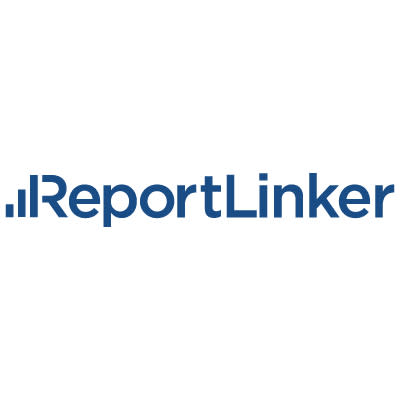
Product Overview Virtual reality (VR) is a computer-simulated reality that is realized by replicating a user’s environment in an immersive three-dimensional experience. The VR simulator exhibits growing applications in the automotive field.
New York, July 27, 2022 (GLOBE NEWSWIRE) — Reportlinker.com announces the release of the report “COVID-19 Impact on Global Virtual Reality in Automotive Market: By Component, By Application and Region –Analysis of Market Size, Share and Trends for 2014 – 2019 and Forecasts for 2030” – https://www.reportlinker.com/p06310364/?utm_source=GNW
It is commonly used, for example, to build virtual worlds for car manufacturers and distribution centers. The simulators will provide useful learning experiences for new employees in the car manufacturing unit. Provides a virtual representation of the car with features such as scale, color, architecture, structure, and more. These virtual designs have helped the company’s engineers review and identify model flaws. Similarly, it provides customers in the dealer’s showroom with car evaluation functions. Customers can take virtual test drives and check car features such as parking assist and view rear cameras. That’s likely to drive the adoption of virtual reality in the auto industry.
Market Highlights
The global Automotive Virtual Reality market size was recorded at US$620 million in 2019 and is estimated to reach US$36.82 billion in 2030, registering a CAGR of 46.11% from 2020 to 2030 Virtual reality technology offers the automotive industry great advantages in marketing and sales. VR provides an immersive automotive marketing platform to create greater interaction with customers. The company will provide its customers with a virtual car driving experience with digital marketing solutions. It allows car dealers to display the designs and features of their cars to customers electronically. Digital marketing creates widespread consumer impact and helps improve showroom sales. This new trend increases customer loyalty, the shopping experience and improves sales growth. Therefore, immersive technology is gradually being used for sales and marketing in the automotive industry. Thus promoting the market for virtual reality in the automotive industry.
Global Virtual Reality in Automotive Market Opportunity Analysis
Global Automotive Virtual Reality Market: Segments
The global In-Car Virtual Reality market is segmented on the basis of component, application, and region.
By Component (in %), Global Virtual Reality in the Automotive Market, 2019
The hardware segment is anticipated to record XX% of the market share during the forecast period.
By component, the market can be segmented into hardware, software, and content. Due to the declining cost of headsets, the hardware segment is expected to gain significant market share. Increasing investment by companies in the research and development of advanced VR headsets is also likely to drive growth in this segment.
By Application (in %), Global Virtual Reality in the Automotive Market, 2019
The training segment represented XX% of the national volume in 2019
The applications segment can be classified into design and prototyping, training, virtual reality showrooms, and research and development. The training apps category is expected to gain momentum in the automotive industry due to its extensive training capabilities for engineers and technicians. It also provides a comfortable environment for learners and helps reduce error rates substantially. Virtual showrooms are also exhibiting a growing demand for better customer service. With the introduction of wearable devices, it provides its consumers with an immersive experience. This will also improve segment production.
Dynamics of Global In-Car Virtual Reality Market:
Digital marketing and technological advances to increase market growth.
VR technology provides the automotive industry with great advantages in marketing and sales. VR provides an immersive automotive marketing platform to create greater interaction with customers. The company will provide its customers with a virtual car driving experience with digital marketing solutions. It allows car dealers to display the designs and features of their cars to customers electronically. Digital marketing creates widespread consumer impact and helps improve showroom sales. This new trend increases customer loyalty, the shopping experience and improves sales growth. Therefore, immersive technology is gradually being used for sales and marketing in the automotive industry. Similarly, technology can give consumers the option to change car settings, such as choosing the colors and others they want. That is likely to drive the adoption of virtual reality in this industry.
Lack of versatility and human link to hinder market growth
Virtual reality simulators and methods provide excellent solutions for employee training. However, visual learning sessions can impair the bond between humans. Therefore, due to the contact distance, the workers cannot understand the intention of the work and the vision of the company, which is likely to hamper the business. In addition, the simulator lacks versatility during training sessions, such as questioning and resolution of doubts. This simulator with minimal fidelity will discourage learners on the site. This could bring more complexity to realistic practical installations. Furthermore, symptoms of simulator disease can undermine the effectiveness of the training and can affect its usability. That’s likely to hamper the auto industry’s growth in VR.
Global In-Car Virtual Reality Market: Regions
In terms of value and volume, Europe accounted for XX% of the total market volume in 2019
In the coming years, the European market is expected to experience significant growth. The increasing use of technologically advanced devices and the growing demand for automated concepts would generate multiple development opportunities. Due to increased investment in the production of embedded and sensor-based technologies, virtual reality in the North American automotive industry will also witness tremendous growth.
The region segment can be divided into five main types, including North America, Latin America, Europe, APAC, and MENA.
The Global In-Car Virtual Reality Market is further segmented by region into:
North America Market Size, Share, Trends, Opportunities-oY Growth, CAGR – United States and Canada
Latin America Market Size, Share, Trends, Opportunities, YoY Growth, CAGR: Mexico, Argentina, Brazil and Rest of Latin America
European Market Size, Share, Trends, Opportunities, YoY Growth, CAGR: UK, France, Germany, Italy, Spain, Belgium, Hungary, Luxembourg, Netherlands, Poland, NORDIC, Russia, Turkey and Rest of Europe
APAC Market Size, Share, Trends, Opportunities, YoY Growth, CAGR: India, China, South Korea, Japan, Malaysia, Indonesia, New Zealand, Australia, and Rest of APAC
MENA Market Size, Share, Trends, Opportunities, YoY Growth, CAGR – North Africa, Israel, GCC, South Africa and Rest of MENA
Global Virtual Reality in the Automotive Market: Impact of COVID-19
The global COVID-19 pandemic has become a global stress not only for human lives, but also for industries in different industry verticals. The COVID-19 disease has infected several million people worldwide, with a growing number of active cases daily, the duration of the pandemic is still difficult to predict. One of the most impacted sectors during the pandemic is the automotive industry. The demand for social distancing in factories and offices has slowed down the production of the industry. Similarly, amid the lockout, the industry is experiencing a drop in revenue. However, the introduction of virtual reality technologies offered automotive gamers new ways to deal with the current situation. Virtual reality equipment and simulators will provide technicians with adequate technical training while maintaining the necessary social distance. In the same way, with the help of a VR headset, new prototypes and prototypes can be made from a remote location. In addition, the introduction of a virtual reality showroom and in-house virtual test drive experience for customers is expected to improve revenue. Vroom, the car manufacturer, for example, is adopting the technology to display its new models in a remote area. To provide them with a driving experience in the virtual world, the company will bring the entire system to the customers’ location. Therefore, post-pandemic demand is expected to expand significantly.
Global In-Car Virtual Reality Market: Competitive Landscape
New technological advancements in the global In-Car Virtual Reality market as well as large production of the product by key players are likely to enhance the growth of the market. Also, the growing safety and security concerns among people and the New Car Assessment Programs launched by companies around the world are other factors that are driving the global Virtual Reality market in the automotive market.
Global In-Car Virtual Reality Market: Key Players
Sony
company overview
Business strategy
Key Product Offerings
Financial performance
Key performance indicators
Risk analysis
recent development
Regional Presence
SWOT Analysis
Continental AG
Google
ZeroLight Limited
HTC Corporation
bosch limited
Drive Technologies
Visteon Corporation
Microsoft
Other notable players
Global In-Car Virtual Reality Market Report Also Contains Analysis On:
Global Automotive Virtual Reality Market Segments:-
By component:
Hardware
Software
Contents
By application:
Design and Prototyping
Training
Virtual Reality Showrooms
Investigation and development
Global Virtual reality in the dynamics of the automotive market
Global In-Car Virtual Reality Market Size
Offer and demand
Current trends/issues/challenges
Competition and companies involved in the market
Market Value Chain
Market Drivers and Constraints
Read the full report: https://www.reportlinker.com/p06310364/?utm_source=GNW
On reportlinker
ReportLinker is an award-winning market research solution. Reportlinker finds and organizes the latest industry data so you get all the market research you need, instantly, in one place.
__________________________
CONTACT: Clare: [email protected] US: (339)-368-6001 Intl: +1 339-368-6001

